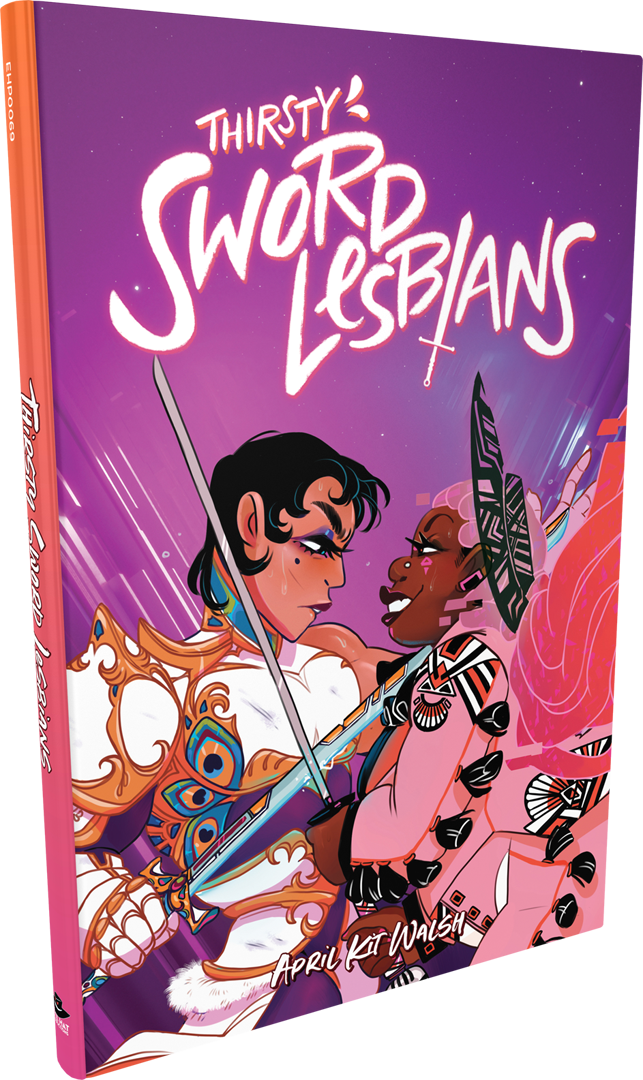Not a snarky question but it will come off that way, but for the designers referenced was it cause they were using 4e related game ideas/structures and enjoyed the freedom of the system or since the game was locked out by the GSL, they had to create something new to sell during at time so they were creative for that reason? Just curious and it might be answered as I’m at this post reading the discussion.
I don't think that there is a singular meta-narrative here. However, I think that
one of the side-effects that 4e D&D (and Pathfinder 1) had on the market was that it caused players to look around for alternative games and game designers to create alternatives. For whatever their reasons, there were a number of designers/publishers who didn't bother designing for 4e and, instead, created their own games.
Some of these games came from people who were on the D&D Next team (e.g., Monte Cook, Rob Schwalb) or even past 3e/4e lead designers (e.g., Tweet & Heinsoo). So there was partially a "
how I'd do it..." feeling from a lot of the d20-based games, which was also true for Joseph Goodman's DCC.
From what I heard, Vincent Baker partially designed Apocalypse World in response to how players would play d20 system style skill checks (e.g., "I roll Perception" rather than fiction-first approaches). It was also designed to accomodate his wife Meguey Baker's more free form roleplaying style. But some fairly indie creators - Vincent Baker (Apocalypse World), Evil Hat Productions (Fate), Cam Banks (Cortex Plus) - were mostly doing their own thing regardless of what the Dragon Game was doing.
It's also worth pointing out that the OSR movement, which had already begun during the 3e period (e.g., Castles & Crusaders, OSRIC, etc.), began to explode with retroclones following Swords & Wizardry (2008) by Matt Finch. A lot of this was came from a general dissatisfaction with the direction that WotC was taking the game, starting in 3e, since many wanted to keep playing their TSR dragon games of "old." Ironically, Matt Finch's article "A Quick Primer for Old School Gaming" (2008) also signalled a move to "philosophical OSR" or "Nu-OSR" territory, at least as it was picked by some OSR enthusiasts. This is where OSR-inspired games like Torchbearer (2013), Dungeon World (2012), or Into the Odd (2015) come into the picture.
There was simply a LOT of design going on during this time frame (i.e., 2008 - 2015).
In terms of designers looking at 4e for inspiration? It has really only happened within the past five or so years that designers have openly cited 4e D&D as inspiration for their games: e.g., Lancer/Icon, Beacon, Fabula Ultima, Gubat Banwa, etc. That is partially the result of the Edition Wars dying down (though some still beat that dead horse) and hobbyists looking back at 4e with fresh eyes or detached retrospection about what sort of games that it did well.
It's honestly one reason that the OGL fiasco actually gave me hope. I never once had the silly notion that D&D would be dethroned as king of the hobby, but, rather, I hoped that would we see a similar creative period re-emerge. I'm dismayed that with so many people running back into the arms of WotC to kiss their royal ring, that all this talk of designers and hobbyists making their own game will likely die in favor of continuing to feed the overfed Dragon Game since that is where the money is.
All this brings us back round to the original question:
"Is what is good for D&D "good" for the hobby?" Maybe we should first ask these as separate questions: (1)
"What is good for D&D?" and (2)
"What is good for the TTRPG hobby?" Or even ask this question in reverse:
"Is what's good for the hobby good for D&D?"
I sometimes feel that original question is often asked to justify the continued existence and divine right of the Hobbesian Leviathan (i.e., D&D) to rule and to put other non-D&D games
"in their place." 





